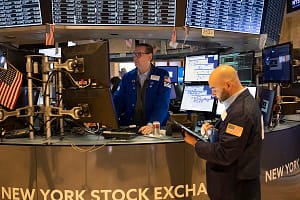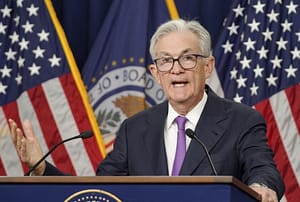The Dow Jones (US30) has continued its recovery in recent sessions, primarily supported by expectations that the Fed will soon begin a rate-cutting cycle.
Following the Jackson Hole symposium, Fed Chair Jerome Powell’s remarks reinforced the view that the Fed is becoming more cautious about rising risks in the labour market, while leaving the door open for policy easing if economic data continues to weaken.
This “cautiously dovish” signal has strengthened confidence that U.S. monetary policy is gradually shifting, thereby providing momentum for U.S. equities in general and the Dow Jones in particular.
With interest rates potentially set to decline, equity sectors sensitive to capital costs—such as financials, industrials, and consumer discretionary—are expected to benefit significantly. At the same time, the energy sector may also play an important role if oil prices remain elevated, supporting profitability within the industry. Meanwhile, defensive sectors such as consumer staples and healthcare continue to act as stabilizers, helping the Dow Jones maintain resilience compared to more cyclical indices like the Nasdaq.
Nevertheless, the short-term outlook for the Dow Jones still faces multiple risks. Markets are awaiting the release of preliminary U.S. GDP and core PCE inflation—two key indicators that could directly influence the Fed’s September policy decision. Should the data confirm slowing economic growth and easing inflation, expectations for rate cuts would be reinforced. Conversely, any upside surprises could trigger a rebound in bond yields, increasing pressure on equities.
In addition, trade tensions are emerging as a significant risk. Washington recently raised tariffs on Indian imports to 50% after the country continued purchasing Russian oil. This move not only raises the risk of retaliatory trade measures but also directly impacts U.S. retailers. Many large retailers have already accelerated imports to avoid higher costs once the new tariffs take effect, but this could push consumer goods prices higher during the year-end shopping season, pressuring already price-sensitive consumers.
Beyond macroeconomic concerns, the global geopolitical landscape remains a major uncertainty for the Dow Jones. The ongoing Russia–Ukraine war, escalating tensions in the Middle East, and U.S.–China strategic competition continue to pose risks to supply chains and global energy costs. If oil prices or shipping costs spike again, inflationary pressures could resurface, forcing the Fed to act more cautiously on rate cuts—a scenario unfavourable for equities. Furthermore, U.S.–China tensions over trade, technology, and investment could directly weigh on the outlook for many multinational corporations within the Dow Jones, particularly industrial and manufacturing firms.
Despite these challenges, the medium-term outlook for the Dow Jones remains cautiously positive. Expectations that the Fed will begin its rate-cutting cycle this year, combined with a revival of capital flows into traditional industries, provide a strong foundation of support. Moreover, the diversified sector composition of the Dow Jones makes it less dependent on the volatility of the technology sector, offering better balance within the index. However, for the upward trend to become more sustainable, the market will require broader confirmation from economic data and a more stable geopolitical environment.






Leave a Comment